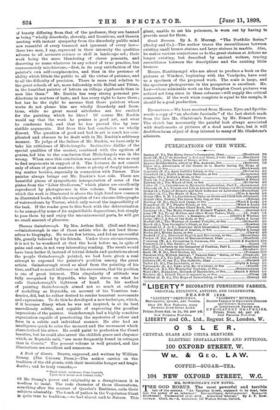Thomas Gainsborough. By Mrs. Arthur Bell. (Bell and Sons.) —Gainsborough
is one of those artists who do not lend them- selves to biography. He wrote few letters, and led an uneventful life, greatly beloved by his friends. Under these circumstances, it is not to be wondered at that the book before us, in spite of pains and care, is not very interesting reading. The result would have been better if, instead of trivial details and quotations about the people Gainsborough painted, we had been given a real attempt to expound the painter's position among the great artists. Gainsborough stood so aloof from the painting of his time, and had so much influence on his successors, that his position is one of great interest. This singularity of attitude was fully recognised by Reynolds, who lays stress on what he calls Gainsborough's lightness of hand. In his method of painting Gainsborough aimed not so much at solidity of modelling as Reynolds, on account of his Venetian ten- dencies, did, but he rather desired to render transient movements and expressions. To do this he developed a new technique, which, if it becomes flimsy when he was not inspired, is at its best marvellously subtle, and capable of expressing the peculiar impressions of the painter. Gainsborough had a highly sensitive organisation capable of penetrating the mysteries of colour and form in a subtle and individual manner. He also had an intelligence quick to seize the moment and the movement which characterised his sitter. He could paint to perfection the Court beauties, but he could also arrest the childish grace and elegance which, as Reynolds said, "are more frequently found in cottages than in Courts." The present volume is well printed, and the illustrations are excellent and numerous.






































 Previous page
Previous page